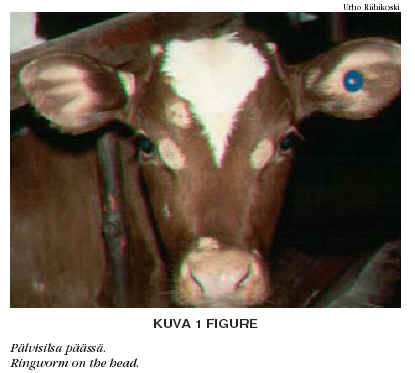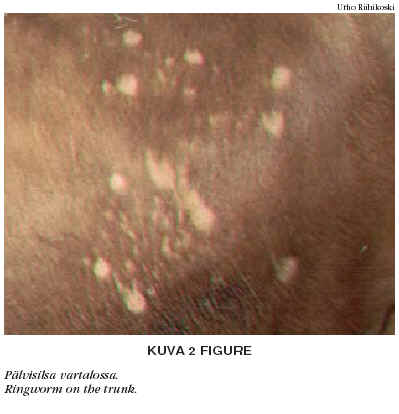
According to the authors' experience, there is a broad variation in use of anthelmintics in the Finnish beef suckler calf production. Some farms do not use medication at all while others may routinely treat animals every year. Sometimes the use of anthelmintics is based on knowledge of the parasite burden on the farm but in many cases this information is missing. To evaluate the impact of one of the anthelmintic treatment methods commonly used, the treatment was given at weaning in autumn and the impact of the medication on the daily weight gain between weaning and the age of one year was evaluated. This research included four farms and 169 calves in total. Faecal samples were collected at weaning and investigated for parasites. Eprinomectin or moxidectin pour on solutions were used as anthelmintic treatment. The daily weight gains of the treated animals were compared with the daily weight gains of the untreated animals. Parasite counts in faecal samples were low. Three of the farms had a subclinical lungworm infection. There were no statistically signifi cant differences between the daily weight gains of treated and untreated animals.
The results of this research suggest that routine use of anthelmintic treatment for subclinical infections is not always economically profi table. We cannot, however, make general conclusions based on this research because of the rather small number of farms and calves included. There are also differences in the need for anthelmintic treatment in different calf groups such as animals for future breeding and calves for meat production or for sale. Animal trade from farm to farm emphasizes the need for anthelmintic treatment because the parasite status of each farm may differ and is not necessarily known.
Ringworm is a cattle disease caused by dermatophytes that spreads easily from animal to animal. Ringworm causes economic losses due to hide damages, and reduces animal welfare. It is also a common zoonosis among farm workers. In Norway and in Finland, ringworm in cattle is a notifi able disease. In Norway, the contaminated farms are under restriction. In Finland, meat industry is sponsoring vaccinations of the animals. In Sweden, a national vaccination programme is sponsored by the Swedish hide industry. The control of the disease is based on vaccination and hygienic measures. In Finland, 20–30 new cases of ringworm are recorded in cattle units each year.

